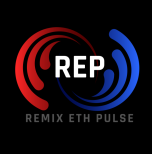Overview of Seven Mainstream DEXs
In the past week, the survival status of decentralized exchanges has sparked widespread discussion. Hyperliquid was shaken by “self-destructive arbitrage” from whales leveraging 50 times, resulting in nearly $4 million loss in its HLP insurance fund after accepting liquidation orders. Meanwhile, GMGN, which thrived during the pump period, has also fallen into significant trouble. According to data from Dune, the platform’s revenue has plummeted from $2.34 million on January 19 to $74,000 on March 11, a drop of nearly 97%. At the same time, high marketing expenses for community feedback, user attrition, and intensified competition due to CEX entries have further raised concerns about GMGN’s future. In this context, ChainCatcher reviews the recent revenue situations of seven mainstream DEXs for readers’ reference.
Quick Insights (No Nonsense, Direct Conclusions)
- Jupiter and PancakeSwap maintain relatively high daily revenues, with stable long-term performance.
- Hyperliquid leads in revenue over the past 24 hours but has seen a significant drop from historical highs.
- Raydium and Shadow Exchange have seen a sharp decline in revenue, with noticeably reduced market activity.
- Aerodrome and THENA have experienced serious declines but still possess some profitability.
The following is a comparison of several mainstream DEXs’ revenue over the past 24 hours and their historical highest single-day revenue:

Data Source: Defillama, as of March 12.
In-Depth Analysis: Current Status and Trends of Mainstream DEXs
1. Shadow Exchange
✅ Background and Positioning: A native concentrated liquidity layer and exchange deployed on Sonic, supported by the x(3,3) incentive model, aiming to provide an efficient and low-cost trading experience.
Revenue Data: Historical high of $864.44K, recent 24-hour revenue of $83K, a decrease of 90.30%.
Market Performance: Ranked in the top ten for cryptocurrency revenue over the past 30 days, with stable user activity. The x(3,3) mechanism enhances capital utilization efficiency, while the MEV protection mechanism optimizes the trading experience, providing considerable returns for liquidity providers and traders. The Gems reward system attracts deep participation from the Sonic ecosystem, promoting the expansion of the protocol ecosystem and demonstrating ongoing growth potential.
2. Raydium
✅ Background and Positioning: A leading AMM DEX in the Solana ecosystem that previously attracted a large user base with low fees and efficient trading.
Revenue Data: Historical high of $3.39M, recent 24-hour revenue of only $48K, a decrease of 98.57%, with significantly reduced market activity.
Market Performance: At one point in Q4 2024, it accounted for 61% of Solana DEX trading volume, but its TVL is only 39% of Uniswap’s, indicating active trading but relatively insufficient liquidity. Furthermore, as Raydium’s trading volume is highly dependent on support from Pump.fun, it must seek to expand into new non-meme areas going forward.
3. Jupiter
✅ Background and Positioning: A leading DEX aggregator in the Solana ecosystem, providing optimized best trading paths and serving as a core pillar for Solana DeFi trading volume.
Revenue Data: Historical high of $3.13M, recent 24-hour revenue of $329K, a decrease of 89.46%, yet maintaining relatively high activity compared to other DEXs.
Market Performance: As the DEX with the highest trading volume in the Solana ecosystem, it boasts deep liquidity and high cross-platform integration, resulting in low user trading costs. However, it has faced scrutiny for potential insider trading due to the Libra incident, with no further investigation results available yet.
4. PancakeSwap
✅ Background and Positioning: The leading DEX in the BSC ecosystem, maintaining competitiveness through low gas fees, fast transactions, and multi-chain expansion (Ethereum, Arbitrum, Polygon, etc.).
Revenue Data: Historical high of $6.4M, recent 24-hour revenue of $1.11M, a decrease of 82.65%, but still retaining high profitability in the DeFi space.
Market Performance: Benefiting from the active BSC ecosystem, PancakeSwap has a broad DeFi user base and continues to expand its product offerings (such as NFTs, staking, etc.).
5. Hyperliquid
✅ Background and Positioning: A decentralized derivatives trading platform in the Arbitrum ecosystem, employing an active market-making mechanism, differentiating itself from GMX.
Revenue Data: Historical high of $4.42M, recent 24-hour revenue of $1.17M, a decrease of 73.52%, yet still dominates the DeFi derivatives market.
Market Performance: Attracting traders due to high leverage trading, Hyperliquid maintains a lead in trading volume and profitability. However, recent whale arbitrage events have raised doubts about its liquidity management mechanism, leading to some capital fleeing for safety.
6. Aerodrome
✅ Background and Positioning: A core DEX in the Base ecosystem, utilizing the ve(3,3) economic model to incentivize liquidity providers and optimize the trading experience.
Revenue Data: Historical high of $1.52M, recent 24-hour revenue of $290K, a decrease of 80.91%, with a slight decrease in market liquidity but still maintaining some activity.
Market Performance: Dominating the Base ecosystem, benefiting from recent signs of recovery in the Base chain’s market activity, with continuous growth in trading volume and market capitalization, alongside high community participation.
7. THENA
✅ Background and Positioning: One of the DEXs in the BNB ecosystem, using the ve(3,3) economic model aimed at enhancing the sustainability of liquidity incentives.
Revenue Data: Historical high of $208.95K, recent 24-hour revenue of $48K, a decrease of 77.02%, yet remaining competitive within the BSC ecosystem.
Market Performance: Positioned as a second-tier DEX in the BSC ecosystem, facing strong competition from PancakeSwap, but its ve(3,3) model still attracts some liquidity. According to the website, THENA is planning to migrate to version V3, which will introduce “Hooks” functionality, allowing smart contracts to be deployed on specific liquidity pools to execute specific logic during user interactions. This will support advanced order types, complex applications, and customized needs, further enhancing the protocol’s flexibility and functionality.
Currently, decentralized exchanges are showing trends of declining revenue, intensified competition, and structural differentiation. Mainstream platforms’ revenues have generally fallen by 70%-98% from historical highs, with market activity significantly affected. Jupiter and PancakeSwap remain at the forefront, maintaining high daily revenues and relatively stable long-term performance, relying on ecosystem layout and user base to sustain competitiveness. Hyperliquid still holds a place in the derivatives market, but concerns regarding its risk control capabilities have arisen due to whale arbitrage events, impacting capital liquidity. Raydium and Shadow Exchange have seen significant revenue shrinkage, the former affected by decreased trading volume on Pump.fun, while the latter suffers from overall reduced market activity. Aerodrome and THENA maintain some profitability but face stronger competitors in their respective ecosystems.
Looking ahead, DEXs still need to address three core issues:
- How to maintain trading activity—As the market cools down and user trading willingness declines, how can DEXs enhance user stickiness?
- How to optimize liquidity management—With intensified competition from whale arbitrage and CEXs, how can platforms build a more robust liquidity system in the DeFi space?
- How to achieve sustainable revenue—In a bear market cycle, high-fee models are difficult to sustain long-term. Do DEXs need new profit models?
Faced with industry challenges, the future survival path for DEXs may no longer solely focus on trading volume, but rather on liquidity, risk control mechanisms, and ecosystem layout.
This article is cooperatively reprinted from: Shenchao

